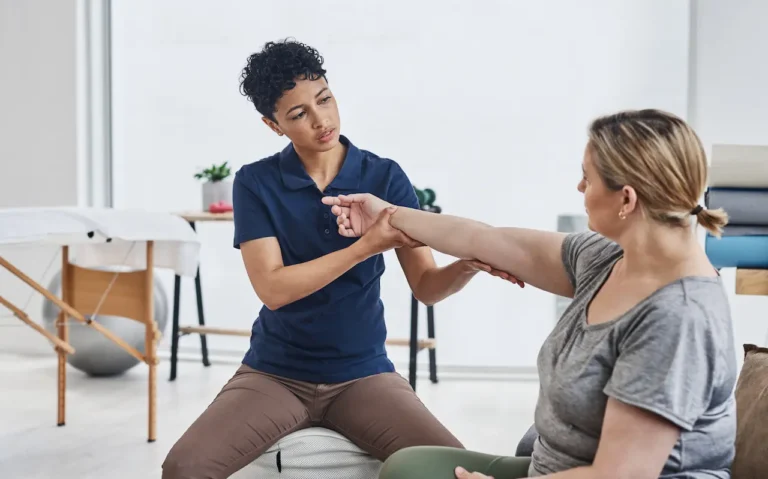Manual Muscle Testing (MMT) is a fundamental tool used in occupational therapy to evaluate muscle strength and identify limitations that impact daily activities. This method helps occupational therapists design targeted interventions to improve functional independence.
What is MMT?
MMT involves testing the strength of individual muscles or specific muscle groups using standardized grading systems. Commonly used grading systems include:
- MRC Scale
- Oxford Scale
- Kendall Scale
- Daniels and Worthingham Scale
These scales provide a structured approach to measure muscle performance, guiding effective therapy plans.
MMT Grading Chart
| Grade | Description |
| 0 (Zero) | No muscle contraction seen or felt. Paralysis. |
| 1 (Trace) | Muscle contraction without movement. |
| 2- (Poor Minus) | Incomplete ROM in a gravity-eliminated plane. |
| 2 (Poor) | Complete ROM in a gravity-eliminated plane. |
| 3 (Fair) | Complete ROM against gravity. |
| 4 (Good) | Complete ROM against gravity with moderate resistance. |
| 5 (Normal) | Complete ROM against gravity with maximum resistance. |
This MMT grading chart is widely used in occupational therapy to evaluate and monitor muscle strength. It also serves as a guide to select suitable therapeutic activities.
Types of Muscle Contractions
Muscle contractions can be categorized into three main types:
- 1. Isotonic Contractions: The muscle contracts to actively move a joint.
- Concentric: Muscle shortens during movement (e.g., lifting a hammer).
- Eccentric: Muscle lengthens to stabilize movement (e.g., setting a hammer down).
- 1. Isotonic Contractions: The muscle contracts without moving the joint
Optimizing Your Therapy With MMT
By understanding MMT grading and muscle contraction types, occupational therapists can tailor interventions to improve patient outcomes. Whether using graded resistance exercises or assistive devices, MMT provides a clear roadmap for building strength and independence.
Are You Preparing for the NBCOT® Exam?
If you’re studying to become an Occupational Therapist (OT) or Occupational Therapy Assistant (OTA), mastering concepts like MMT grading is essential. At Pass the OT, we offer expert-led NBCOT® exam prep that covers everything you need to succeed:
- Comprehensive study plans tailored to your strengths and weaknesses.
- Interactive video lessons, practice questions, and rationales.
- 1-on-1 tutoring to address your individual challenges.
- Proven strategies to boost your confidence and exam performance.
What is Manual Muscle Testing (MMT) in occupational therapy?
Manual Muscle Testing (MMT) is a method used by occupational therapists to evaluate muscle strength. It helps in creating personalized therapy interventions that aim to enhance patients’ functional independence.
How does the MMT grading scale work?
The MMT grading scale ranges from 0 (Zero), indicating no muscle contraction and paralysis, to 5 (Normal), which reflects complete range of motion (ROM) against gravity with maximum resistance.
What are the types of muscle contractions essential for therapy planning?
Therapy planning involves understanding three muscle contraction types: Isotonic (concentric and eccentric) and Isometric. Isotonic includes muscle contractions with movements, while Isometric involves muscle contractions without movement.
Why is MMT crucial for passing the NBCOT® exam?
Mastering MMT concepts is vital for NBCOT® exam success as it aids in designing therapy plans that focus on patients’ independence in daily life, a key component tested in the exam.
What resources are available for NBCOT® exam preparation?
Resources such as customized study plans, interactive video lessons, practice questions, 1-on-1 tutoring, and proven strategies are available to boost confidence and performance in the NBCOT® exam.


